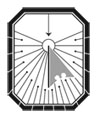The Return of Burlesque: Comic Forms in Contemporary Ukrainian Literature, 1985–2010
DOI:
https://doi.org/10.18523/kmhj51041.2015-2.109-120Keywords:
burlesque, carnival laughter, satire, contemporary Ukrainian literatureAbstract
Burlesque as a literary device can serve for satirical purpose, but its main function is revealed in the provocation of carnivalesque ambivalence. Unlike satire, where an author remains serious,carnival laughter captures everyone, including its provocateur. This is exuberant laughter that affirms the joyful fact of very human existence. The use of burlesque in Ukrainian literature does not refer to a certain epoch, but forms a continuous and powerful tradition. In the middle of the 1980s, with the liberalization of Ukrainian society, literature steadily turned away from a purely utilitarian role, and burlesque returned, as a device of free and unrepressed laughter. The “Bu-Ba-Bu” literary group, Yuri Vynnychuk, Les Poderviansky, Mukhailo Brynykh most actively elaborate burlesque in their writings, either in a carnival context, or as a device of satire. Thus, the burlesque tradition is quite visible and influential in contemporary Ukrainian literature.
References
Bakhtin, Mikhail. Tvorchestvo Fransua Rable i narodnaia kultura srednevekovia i Renesansa [François Rabelais’ Works and Folk Culture of the Middle Ages and Renaissance]. Moscow: Khudozhestvennaia literatura, 1990.
Freid, Zigmund. Ostroumiie i ieho otnosheniie k bessoznatielnomu [The Joke and its Relation to the Unconscious]. Moscow: AST; Minsk: Kharvest, 2006.
Habor, Vasyl, ed. Bu-Ba-Bu (Andrukhovych, Irvanets, Neborak). Lviv: Piramida, 2007.
Habor Vasyl, ed. Ukrainski literaturni shkoly ta hrupy 60-90 rr. XX st. [Ukrainian Literary Schools and Groups of the 1960s–1990s]. Lviv: Piramida, 2009.
Hrabovych, Hryhorii. Semantyka kotliarevshchyny [The Semantics of kotliarevshchyna]. Accessed December 18, 2014. http://izbornyk.org.ua/hrabo/hr14.htm.
Hundorova, Tamara. Kitch i literatura [Kitsch and Literature]. Кyiv: Fakt, 2008.
Hutcheon, Linda. A Theory of Parody. The Teachings of Twentieth Century Art Forms. London: Methuen, 1985.
Kovaliv, Iurii. Literaturoznavcha encyclopediia [Literary Criticism Encyclopedia]. 2 vol. Кyiv: Academiia, 2007.
Nudha, Hryhorii, ed. Burlesk i travestiia v ukrainskii poezii pershoi polovyny XIX st. [Burlesque and Travesty in Ukrainian Poetry of the First Half of the 19th Century]. Кyiv: Derzhavne vydavnytstvo khudozhnioi literatury, 1959.
Poltoratsky, Oleksii. “Scho take Ostap Vyshnia?” [“Who is Ostap Vyshnia?”] Nova Heneratsia 2–4 (1930): 28–32.
Rose, Margaret. Parody: Ancient, Modern, and Post-modern. Cambridge: Cambridge University Press, 1993.
Semkiv, Rostyslav. “Yuri Vynnychuk iak tsentralna postat halytskoii burlesknoii literatury.” [“Yuri Vynnychuk as the Central Figure of Galician Burlesque Literature.”] In Pislia postmodernizmy, edited by Vira Aheyeva, 83–98. Kyiv: NaUKMA; Ahrar Media Hrup, 2012.
Struc, Roman. “Pushkin, Lermontov, Gogol: Ironic Modes in Russian Romanticism.” In Romantic Irony, edited by Frederick Garber, 241–49. Budapest: Akadémiai Kiadô, 1988.
Downloads
How to Cite
Issue
Section
License
Kyiv-Mohyla Humanities Journal provides free access to original research without restriction barriers (i.e. subscription fees, licensing fees etc.). The journal allows re-use of content for non-commercial/educational purposes indexing the source.
Unless otherwise indicated, content is licensed under the Creative Commons Attribution 4.0 International (CC BY 4.0) license, which means you are free to:
copy
distribute
transmit
adapt
and make commercial use of the work
...provided that any use is made with attribution to author(s) and Kyiv-Mohyla Humanities Journal.
The author passes copyright of the article to the journal and Kyiv-Mohyla Humanities Journal; author can archive post-print articles (PDF versions) on s/he web-site (http://www.sherpa.ac.uk).

